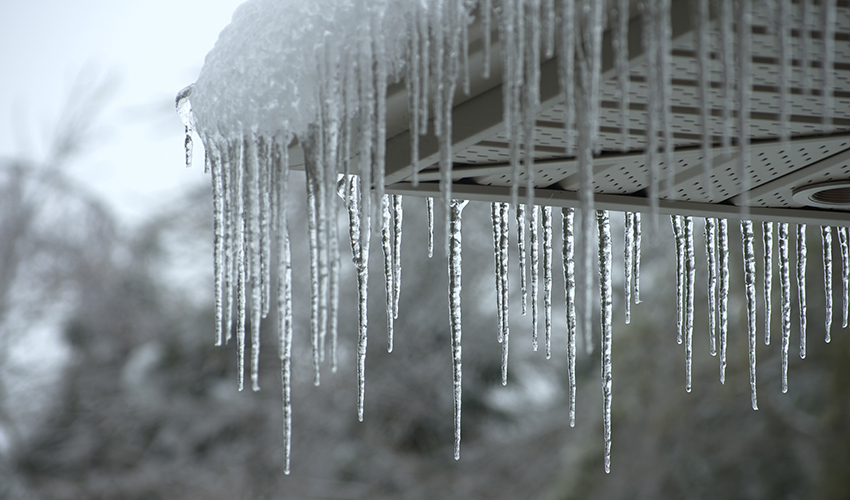How to Prevent Ice Dams

Winter is here. Any Minnesota homeowner knows that when the snowfall increases, so does the risk of ice dams forming along the roofline. Left untreated, ice dams can lead to extensive and costly damage to your home’s roof and gutters, and in some cases, the interior of your house. Read on for information and tips on what you can do to prevent ice dams from ruining the exterior of your home.
What is an ice dam?
An ice dam is a thick ridge of ice that forms along the lower edge of rooflines in climates with cold temperatures and regular snowfall. As heat rises from the home, it melts the snow that has accumulated on the roof, sending water down to settle on the eaves and gutters. When the outside temperature drops, the water essentially refreezes, causing the ice ridge to continually expand and become heavier. This prevents subsequent melting snow from draining off the roof.
Effects
When the snow melts on the warmer part of the roof, the melted snow pools behind the ice and seeps back under roof shingles and, eventually, into the home. This can cause significant damage to walls, ceilings, and floors. In severe cases, ice dams can weigh several hundred pounds, which can tear off gutters, crack shingles, or compromise the overall structure of the roof. In addition, moisture that has entered the home can lead to the growth of dangerous mold and mildew, which adds excessive repairs and health risks.
Prevention
The best way to prevent ice dams from forming is to take action before the snow falls. Since heat loss through the attic is a major contributor to ice dam formation, proper insulation and ventilation are crucial. This creates an airtight seal, keeping the roof’s temperature near or at the outdoor temperature. However, once the snow does fall, be sure to remove it from the roof using a roof rake but take care not to damage the shingles in the process.
In emergency situations where water is flowing into the home, make a path or channel through the ice dam. This will redirect the water and allow it to flow off the roof. You can make a channel by pouring warm tap water where the ice has built up, then chiseling it to create the pathway. It’s most effective to work upward from the lower edge of the ice dam. However, the pathway is only temporary, so it’s best to implement a long-term solution to the problem.
Snow and ice are a way of life in Minnesota. By following these preventative measures, you can keep the damage and cost of ice dams at bay.
The Twin Cities home exteriors professionals from Spotless & Seamless are ready to assist with all your siding and roofing needs. Contact us today.


